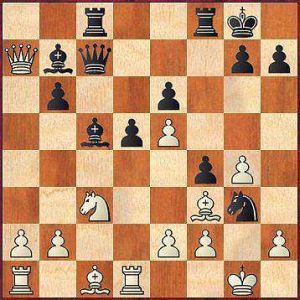Blindfold chess is played differently these days.
IT’S just not the same any more. Not since the growing popularity of computer chess programs, anyway.
Way back in the past when we talked about blindfold chess, it would mean just that: two players who were literally blindfolded. It was great publicity. I remember that in the early 1990s, this newspaper even once published a colour picture of two blindfolded players on the front page.
It’s not so dramatic nowadays. Players in blindfold games are now more inclined to sit at a laptop computer. Some say that the players stare blankly at an image of an empty chessboard on the computer’s monitor but there is much more going on than that. They are thinking, calculating and assessing – and the chessboard, though empty, helps in the visualisation process. And they are still required to record their every move.
So to the experienced chess players, an empty chessboard is not a hindrance at all; not when there are still the visible game scores to follow. These reminders are more than sufficient in allowing them to play normally.
How normal or accurate could their games be, you may ask? Well, very normal indeed. For example, at the Amber tournament in Monaco last month, half of the games were played in this so-called blindfold fashion and they were games of sheer accuracy and brilliance.
This week, I would like to show you one rather remarkable game from this event.
Vladimir Kramnik (rated 2785) – Vassily Ivanchuk (rated 2779)
20th Amber Blindfold, Monaco, 2011
1.Nf3 Nf6 2.c4 e6 3.g3 d5 4.d4 Bb4+ 5.Bd2 Be7 6.Bg2 c6 7.Qc2 0-0 8.0-0 b6 9.Rd1 Nbd7 10.Bf4 Bb7 11.Ne5 Rc8 12.Nc3 Nh5 13.Bc1 f5 14.Qa4 Nxe5 15.dxe5 Qc7 (Something new from Ivanchuk which left Kramnik wondering how to refute.) 16.cxd5 (Later, Kramnik commented that he should have played the immediate 16.Bf3.) 16…cxd5 17.Qxa7 (And finally, White decides to take the offered a-pawn. So the queen is offside but it’s not so simple for Black to trap it with 17…Ra8 immediately. There is bigger game on the kingside.) 17…Bc5 (To support the b-pawn just in case the black queen needs to move away but more importantly, the bishop occupies the diagonal and gets aimed at White’s king.) 18.Bf3 f4 19.g4 (If 19.Bxh5, then 19…fxg3 rips into the white kingside. White sidesteps this but now comes a stunning move.) 19…Ng3! (See diagram) 20.b4 Ra8 21.Nxd5 Nxe2+ 22.Kf1 Rxa7 23.Nxc7 Bxf3 24.Nxe6 Nc3 (Possibly, 24…Bxb4 could have won the game. After Ivanchuk misses that, Kramnik steers the game into safe waters.) 25.bxc5 Nxd1 26.cxb6 Ra4 27.Nxf8 Kxf8 28.Rb1 Rxa2 29.b7 Rxf2+ 30.Ke1 Re2+ 31.Kf1 (Of course, not 31.Kxd1 Rb2+ 32.Ke1 Rxb1 and the white b-pawn falls.) 31…Rf2+ 32.Ke1 ½-½

